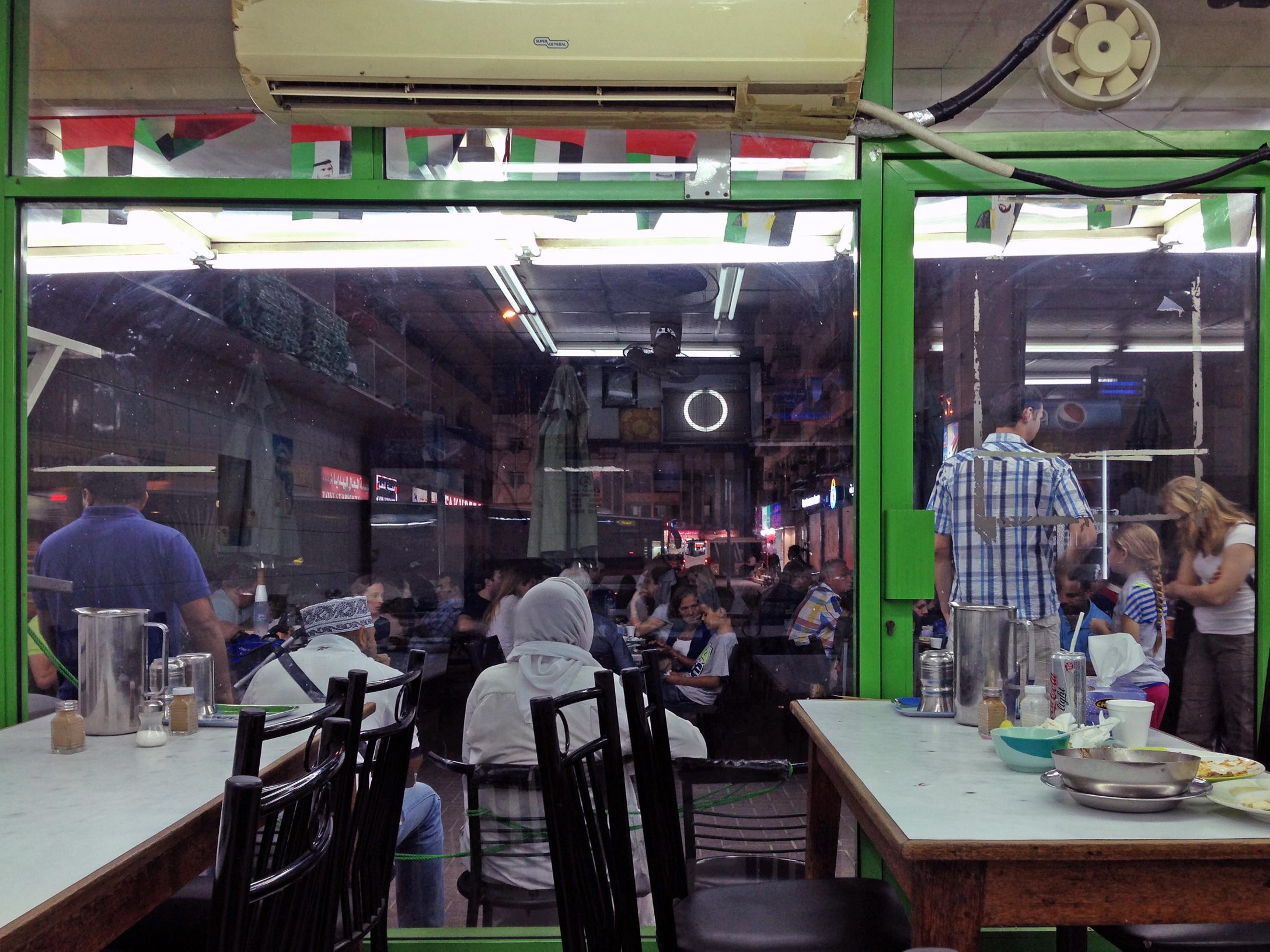A popular Pakistani eatery in Dubai’s working-class neighborhood of Satwa, Ravi was always a refuge for me after long, exhausting days. Along with naan and dal, I would fill up on mutton—always mutton!—to decompress and to prepare for the highway drive home. It wasn’t a fancy place. The interior was plastic chairs, communal tables, and a curious mix of customers. Some would sit in groups, but many would eat alone; some were low-income workers, while others were from professional backgrounds. All hailed from South Asia. All were men. A TV in the background would be playing some Pakistani news show or the occasional game of cricket, while the waiters—a surly bunch, no-nonsense but efficient—took orders.
Sometimes I would take friends and visitors there to experience a different kind of city. A Danish architect found it amusing that the TV was showing an American drone attack somewhere in Pakistan, though when he relayed this observation to (what we took to be) a French film crew at a nearby table, they declined to share his enthusiasm. An Italian photographer disparaged the place, finding the smell “similar to many other restaurants” he had encountered in his travels; he proceeded to enjoy his meal with gusto. An Egyptian colleague once joined me who was used to more-refined dining in the city’s upscale restaurants, and I still remember him fidgeting in his chair and stealing glances at our noisy neighbors; I recall how precisely and with such great care he made his order, and the look on our bemused waiter’s face as he did it.
Ravi is still there, but it’s inextricably linked to my earlier memories of Dubai. My mind goes back to the winter of 2011, when protesters in Cairo had been occupying Tahrir Square for 18 days, demanding Mubarak’s resignation. It was late at night. I was preparing to head home and had decided to stop for a quick meal; the place was boisterous, as usual, and while waiting for my order (and listening to a Pakistani news anchor), I was watching Al Jazeera on my phone. Mubarak would make a “significant announcement,” we were told. It could only mean he had decided to resign, so I completed my meal and went to watch the event unfold at home. For some reason, it’s Ravi that my mind remembers most vividly from that night.
People often say that Dubai is an artificial city, that it lacks authentic places, and that its entire mode of existence revolves around transience. There’s some truth to this—so much of Dubai is a site to pass through, like an airport lounge. But that’s exactly what makes the grounding of a place like Ravi so poignant, so precious. In this city, even the most temporary residents defiantly work to establish a home of sorts—indeed, of many sorts—with a variety of small gestures: nurturing a vegetable garden, displaying lights celebrating the Diwali festival on balconies, gathering in city streets, playing cricket in empty sites, or frequenting an eatery like Ravi. Along with the cheap meal, the company of strangers is a haven. All are faced by this bland and anonymous city, all alienated and alone. But here you are alone together.
Chaudary Abdul Hameed first came to Dubai in 1971 from Wazirabad, in Pakistan’s Punjab province. When he arrived in Dubai, it had not yet become the city of spectacle we know today, was still dominated by dusty lanes and ramshackle structures. But Dubai was on the verge. Oil was found in commercial quantities in 1966, and a construction boom was booming: modern accommodations to house the surging population, bridges, and a modern infrastructure were transforming the city. After working as a laborer, Hameed got a loan from his brother in 1978 and opened the restaurant in a neighborhood that had been, at the time, some distance from the city’s historic core. Originally planned to be a residential suburb for Emiratis, Satwa was enveloped by high-rises and villas as it grew; as the city expanded to the west, Satwa became part of the heart of the new city. On one side, the high-rises of Sheikh Zayed Road, which contained the seat of the government (Dubai Executive Office), the financial center (Dubai International Finance Centre), and eventually the tallest building in the world (Burj Khalifa); on the other side, the upscale district of Jumeirah and its beachfront.
Ravi is at the center of it all; Hameed is always seated by the door, at the cash register. From there he instructs his waiters, receives payment, and ensures that everything is in proper order. In an interview with a Gulf daily, he muses that the whole world is at his doorstep, that his establishment welcomes all kinds of people; he points out the different nationalities: Emiratis, western expatriates, and “those from the subcontinent.” He aims at strengthening bonds within his community through a variety of small gestures, like celebrating Pakistan’s national day by providing a free breakfast to compatriots at the Pakistani Embassy. He makes it a point to offer a cheap breakfast for blue-collar workers who arrive at 5 a.m., with a free portion of halwa-puri (semolina dessert with deep-fried bread) thrown in.
As a patriarch of a large family—he has seven children and six grandchildren, and his sons manage other branches in the city—Hameed represents a success story of sorts, the sort of story the local media likes to highlight. Yet his story is not easily replicable. Today, the city’s impoverished workers tend to languish in labor camps, deprived even of frequenting his restaurant, much less starting their own. Hameed arrived at a time when the city was filled with more possibilities; migrants like him took advantage of the opportunity that the UAE offered, a time when they were welcomed with open arms. It is a very different scene now; today, migrant workers are a temporary commodity, to be dispatched back to their homelands when their tasks are completed. Transience and temporality have permeated the city, forming its modern foundations.
Of course, Ravi is still there. But for all its longevity, there is a sense of precariousness about it. At any point, one feels, it could vanish. It’s perched at the very entrance to Satwa, at the point where one transitions from high-rise to low-rise, from formal to informal, from the spectacular city to one that is . . . less so. Through this transitory space, one reaches the city’s most sought-after neighborhood, Jumeirah, full of villas occupied by the wealthy and powerful, Emiratis and expatriates alike.
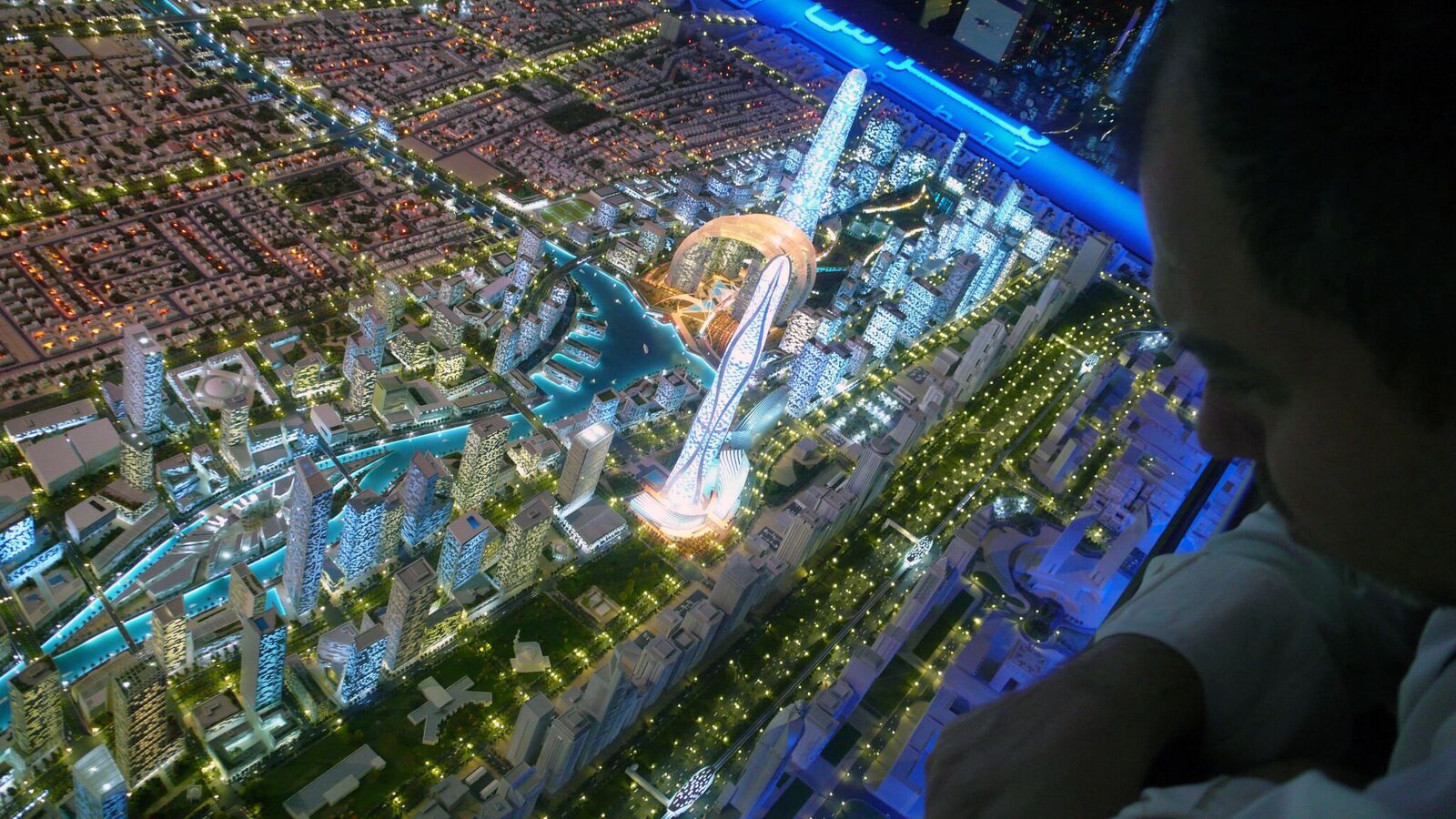
The contrast is striking. One of my favorite places to witness it is from VU’s, a bar located on the 51st floor of Emirates Towers: looking out over Sheikh Zayed Road, you can see Satwa stretching forth, a low-rise expanse whose repetitive and standardized morphology tells you everything about the gap between the haves and the have-nots. High above, from that privileged vantage point, you can sample expensive beverages and rest assured that you are safe and secure from the messy reality on the ground: surrounded by the beautiful people, with the sprawling city in the far distance.
It’s an illusion, of course, the denial that structures the privileged expatriates’ existence, the cartographic perspective of the “voyeur-god,” as Michel de Certeau called it. If you step down from this vantage point, the view from below presents a very different reality. Emiratis began leaving Satwa in the late 1970s, and South Asians moved in, along with many others: “illegals,” the people who overstayed their visas, and a largely ignored population of Bidoon, stateless people who for one reason or another did not obtain Emirati citizenship. Others. In Dubai lore the neighborhood acquired an edgy reputation, as a space of gangs, where anything forbidden could be consumed; beyond the main highway, its dusty alleyways are a hidden world filled with migrants going about their business, children playing in the streets, furniture converting outdoor open spaces into impromptu living rooms, and black-clad women hurrying from one house to the next. There are informal gardens, graffiti, hussainiyas—Shiite religious spaces—and here and there, a yellow flag for Hezbollah.
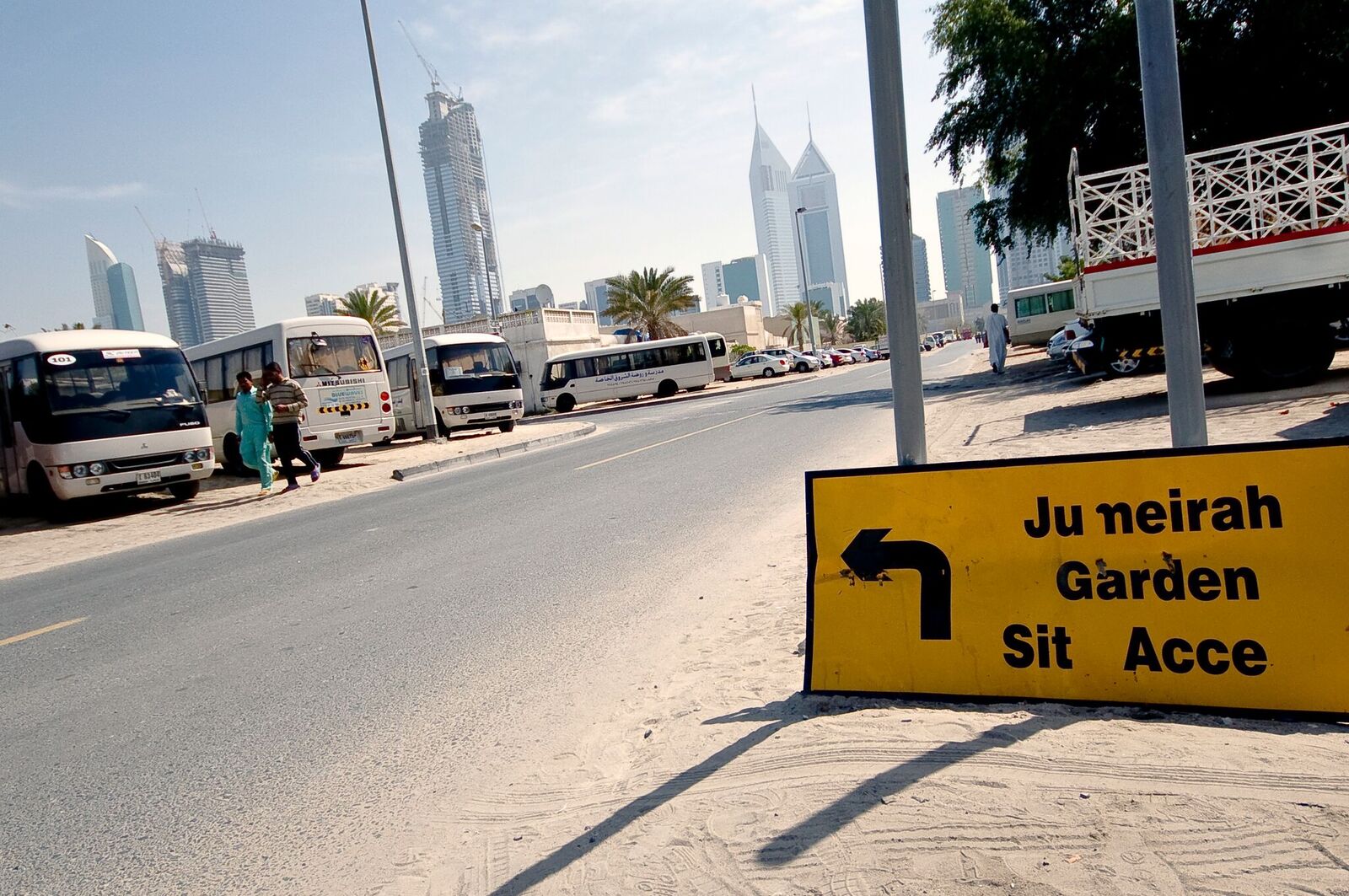
In the background, the city’s ever-expanding skyline stretches upward, a world beyond reach for the district’s inhabitants. But the district is not out of reach for the authorities, who have long been looking for a reason to dismantle it; in 2008, the decision was finally made to bulldoze Satwa as part of a large-scale project called “Jumeirah Gardens,” a utopian—or dystopian, depending on your worldview—configuration of towers, artificial lakes, and lagoons that would have, at its heart, a green space to rival London’s Hyde Park or Central Park in New York, to be called, magnificently, “Dubai Park.”
Residents were issued eviction notices, and a few houses were actually demolished. Media accounts began pushing out “requiems” for the neighborhood’s inevitable passing. But it turned out not to be inevitable; the financial crisis hit, the money stopped flowing, and the projects stopped. People fled the city en masse, and Jumeirah Gardens was canceled. Evicted tenants began to return to what was left of their homes: fences erected to mark the houses slated for demolition and a lonely sign heralding the construction site lying on the street. The ruins housed nocturnal criminality or became makeshift residences for “illegals.”
After Satwa received a new lease on life, it began to take on a new meaning; instead of a world to be bulldozed, it became an attraction in its own right. Emirates Airline began an advertising campaign in which a British tourist takes in the sights of Dubai: in one of his adventures, released in 2009, he wanders among the modest houses and teeming streets of Satwa, and enjoys a lengthy stint at Ravi. (He both anticipates that the food he is served will be too spicy, laughing, and then—after raving at its “flavorfulness”—he confirms that it is, in fact, just a bit too spicy for his European palate). After it was featured in the New York Times, in 2010, Anthony Bourdain visited the restaurant in an episode of No Reservations; describing Ravi as “where the working class go for a taste of home,” Bourdain’s guide, Joseph, explained that the restaurant represented the tolerance, the coexistence, of Dubai: “Look around you,” he said. “We are sitting in a Pakistani restaurant; me being Indian, this wouldn’t be possible in India. . . . That’s Dubai for you.” Ravi began to acquire an “infamous status,” as the BBC described it, as “one of the only ‘authentic’ places that everyone loves to ‘discover.’ ” The rapper Snoop Dogg even made an appearance.
With the collapse of more conventional currencies, perhaps, the financial crisis made the city aware of the value of such places, antidotes to its reputation as a playground for the superrich. The car-repair shops, fabric retailers, tailors, eateries, and the like that line the district’s main drag—Satwa Street—cater to a very diverse group of residents, even the Emiratis who more typically shy away from such humble surroundings. It is a place of encounter: a “Little Manila” is nearby, and during Ramadan, areas for iftar are set up near the bus station to feed low-income workers. The city’s symbols of luxury loom in the distance, but here, people still take communal meals on the street. There are signs of gentrification, of course; nothing lasts forever. Local filmmakers have portrayed it as Dubai’s version of Greenwich Village, artists lament the district’s imminent demise, and the media lavishes praise on its “authenticity.” Along with an increased presence of expatriates, Ravi has become a must-see for the city’s privileged residents as well. See it before it goes. . . .
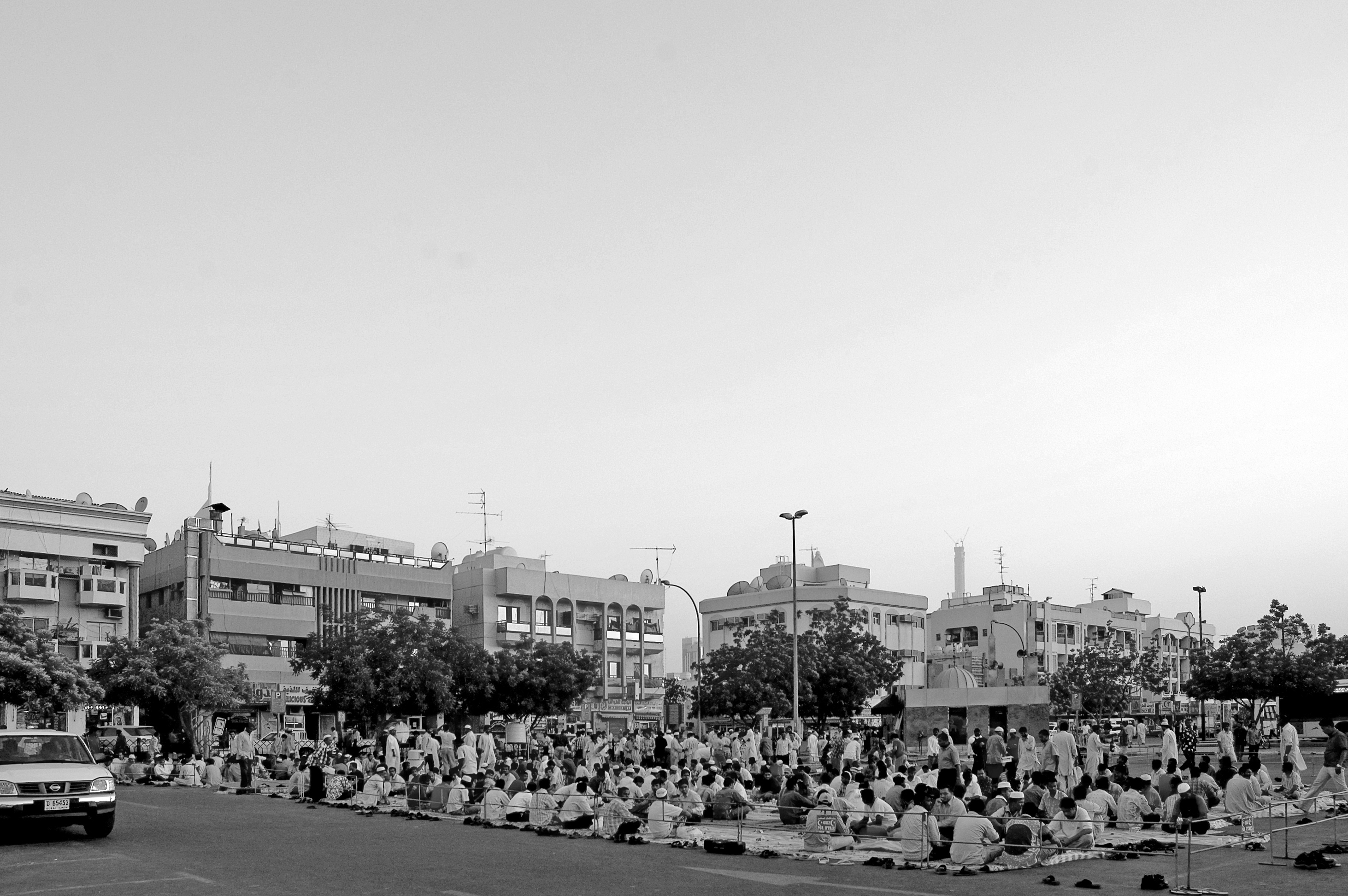
To cater to this clientele, at some point, the restaurant’s space was unofficially bifurcated: while the outdoor seating on the sidewalk has been “reserved” for visitors, tourists, and the like, the more boisterous interior has been left to low-income workers. There are no fixed rules, of course; there are no signs. But the arrangement has become standard, understood, implicit. And so, on any given night, one might be sitting inside the restaurant surrounded by South Asian men eating with their hands and scooping up food with bread; on the other side of the window, one can see Western families with children and well-to-do South Asians and Arabs, all eating in a more refined manner, using conventional cutlery. Two worlds existing side by side.
The arrangement doesn’t bother anyone. It is, in many ways, a microcosm of the city itself, where the entire spectrum of its inhabitants occupies a shared but divided space. In this modest restaurant, one gets a glimpse of how Dubai truly operates and functions. This kind of tenuous coexistence among diverse inhabitants is Dubai; but along with tolerance and proximity, there is separation, distinction, a lack of meaningful interaction. Strict boundaries are wordlessly maintained. And here in Ravi, this boundary is a bank of windows.
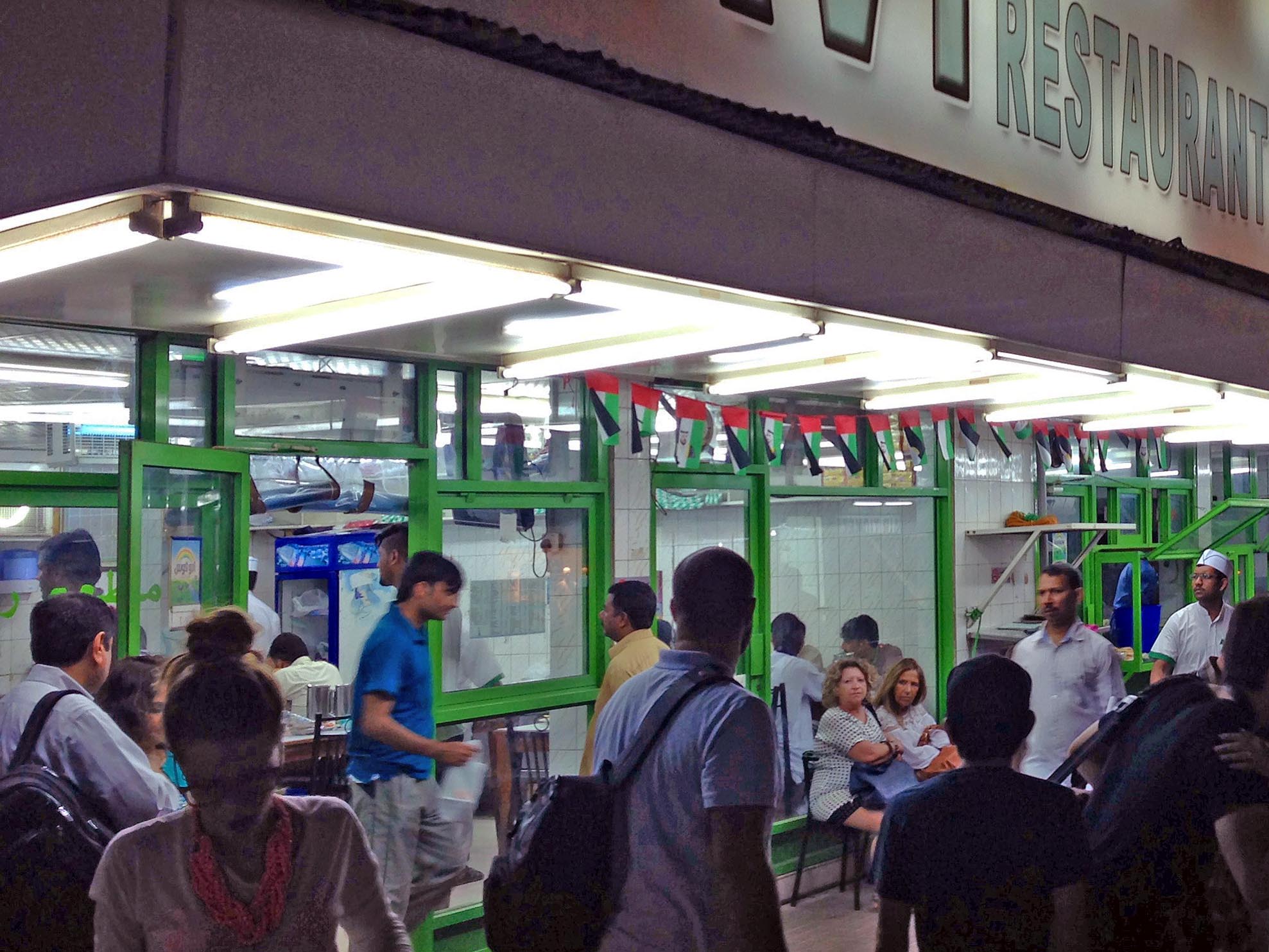
Other places throughout the city capture this same spirit. There is ubiquitous Pakistani chain restaurant Karachi Darbar and the legendary Special Ustadi, one of the oldest Iranian dives in the city. There’s the Bu Qtair seafood shack, which (in an ominous sign) was converted into a fancy eatery and relocated to some sort of heritage theme park. Ravi may be subject to a similar fate, eventually; an entire nearby neighborhood has already been dismantled, its residents displaced, to make way for a mix of outdoor/indoor retail spaces with high-end luxurious housing, called “City Walk,” yet indistinguishable from any other developer-driven real estate venture throughout the world. As a placeless urbanism spreads across the world, establishments like Ravi are still a refuge where weary migrants can find some solace and peace (or where “enlightened” expatriates placate or push aside their implication in the inequality and segregation that pervades the fabric of the city).
Ravi still brings me back to the Arab Spring, an event that gave so much hope to so many in the Arab world. On the fleeting night when Egypt’s revolution had still been redeemed and made real, I was in the one space in Dubai where I always sought freedom, escape, and comfort. As Dubai grew and increasingly turned its back on the city’s vulnerable and downtrodden, there had always been a kind of resistance among its migrant population, an attempt to create a home, to set down roots and to establish permanence. The knowledge that such spaces exist, that they defy the hegemonic city—it gave me hope, a feeling of normalcy. The mere act of being in the restaurant felt like an act of resistance. If it wasn’t comparable to facing the wrath of thugs and snipers in Egypt—and certainly it was not—it still had significance in a hyper-controlled city like Dubai, though as the revolution faltered, in Egypt and elsewhere, I’ve noted the increasing encroachment of those who once sat outside into the eatery’s interior, violating the boundary and implicit contract that had separated the two worlds. Ah, well. I still return to its tattered interior to re-live some of that night’s spark and magic, to perform my own act of (silent) defiance. It might be an illusion. But at least Ravi is still there.

